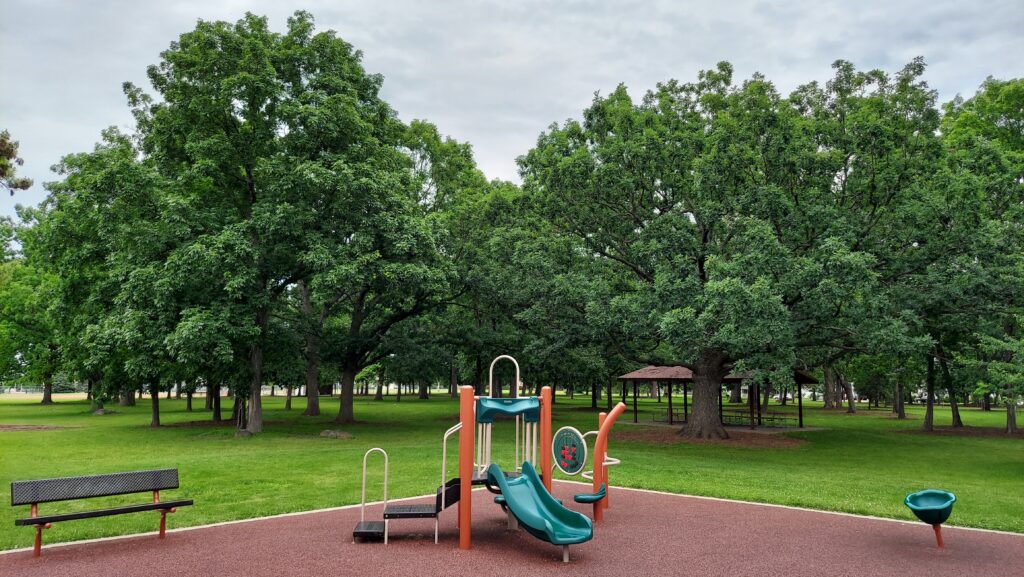 Cities, villages, towns, counties, tribes and 501(c)(3) nonprofit organizations in or conducting urban forestry projects in Wisconsin can now apply for a regular or startup 2026 Wisconsin Department of Natural Resources (DNR) Urban Forestry grant. The total 2026 available funding is $559,680, with a possible release of $139,920 of catastrophic storm reserve to fund a second round in March 2026. Continue reading “2026 DNR Urban Forestry Grant Application Now Open”
Cities, villages, towns, counties, tribes and 501(c)(3) nonprofit organizations in or conducting urban forestry projects in Wisconsin can now apply for a regular or startup 2026 Wisconsin Department of Natural Resources (DNR) Urban Forestry grant. The total 2026 available funding is $559,680, with a possible release of $139,920 of catastrophic storm reserve to fund a second round in March 2026. Continue reading “2026 DNR Urban Forestry Grant Application Now Open”
Taking action
DNR Urban Forestry Council Welcomes New Members
By Jenn Janness, Urban Forestry Council Liaison, jennipher.janness@wisconsin.gov or 715-815-7173
The Wisconsin Department of Natural Resources (DNR)’s Division of Forestry recently welcomed six new members to the Wisconsin Urban Forestry Council and said farewell to three members who contributed much to the council. In addition, four council members renewed their commitment for another three-year term. Linda Cadotte was also confirmed as the chair and will serve for two years.
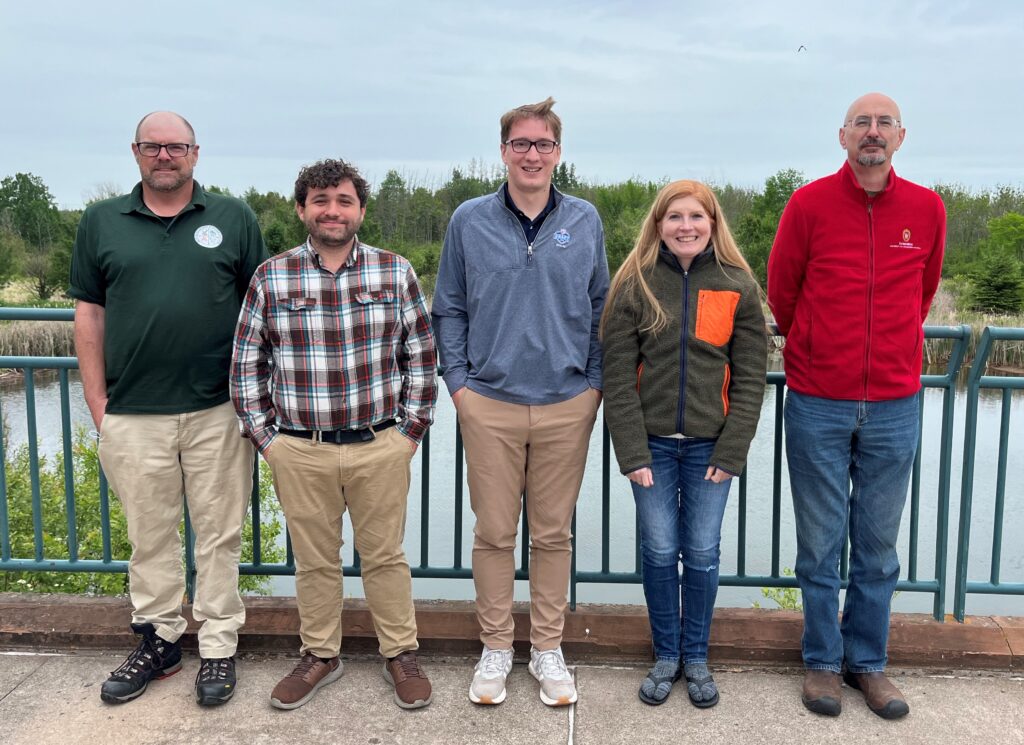
New council members left to right: Greg Blick, Mitch Lannan, Evan Miller, Kristi Sherfinski and Allen Pyle (not pictured, Jeff Kluslow)
Continue reading “DNR Urban Forestry Council Welcomes New Members”
Invasive Species – Fall Workshops
By Olivia Witthun, DNR Urban Forestry Coordinator; Olivia.Witthun@wisconsin.gov or 414-750-8744
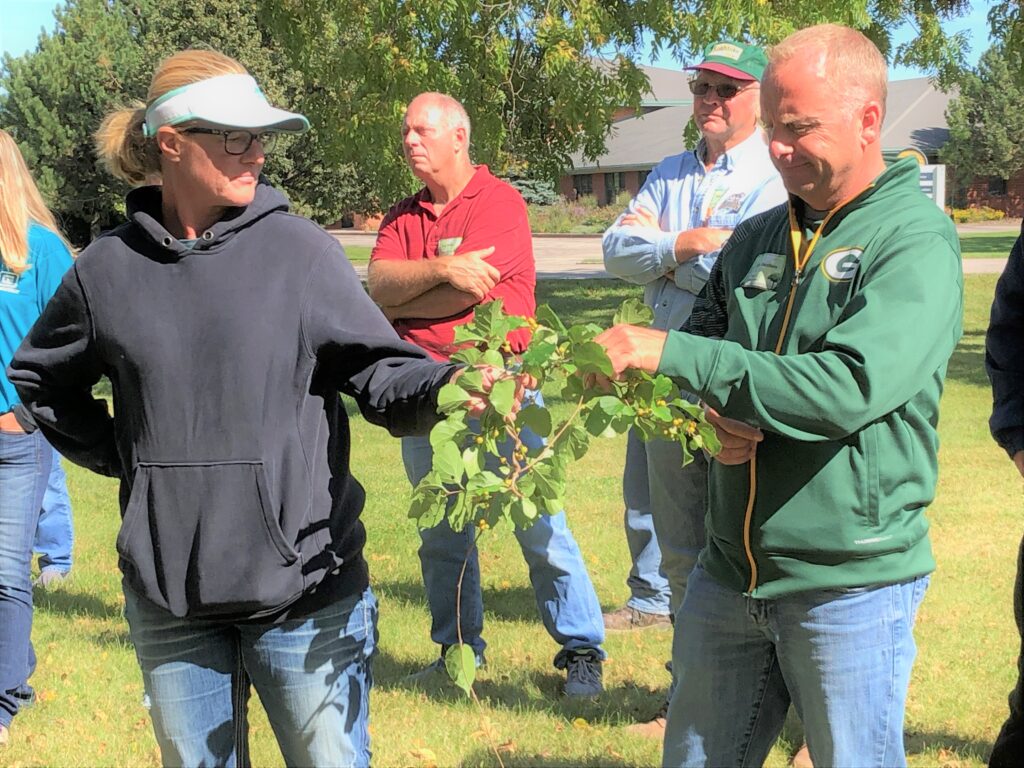 The Wisconsin Department of Natural Resources is partnering with the UW-Madison Division of Extension to host a series of fall workshops on invasive species plant identification and management. Learn about invasive plants in urban settings, focusing on identification, impacts, management and available resources. Dr. Mark Renz (professor and Extension specialist with UW-Madison) will lead the instruction, with Travis Wilson, Matt Wallrath and John Zabrosky assisting. Each workshop will include morning classroom instruction followed by hands-on field demonstrations in the afternoon. The cost of the workshop is $40 and includes lunch. Continue reading “Invasive Species – Fall Workshops”
The Wisconsin Department of Natural Resources is partnering with the UW-Madison Division of Extension to host a series of fall workshops on invasive species plant identification and management. Learn about invasive plants in urban settings, focusing on identification, impacts, management and available resources. Dr. Mark Renz (professor and Extension specialist with UW-Madison) will lead the instruction, with Travis Wilson, Matt Wallrath and John Zabrosky assisting. Each workshop will include morning classroom instruction followed by hands-on field demonstrations in the afternoon. The cost of the workshop is $40 and includes lunch. Continue reading “Invasive Species – Fall Workshops”
Collaborative Reforestation – Sheboygan Area School District
By Tony Fessler, Co-Coordinator – Restoration Of Our Trees Sheboygan, www.sheboyganrotary.com or 920-946-6770.
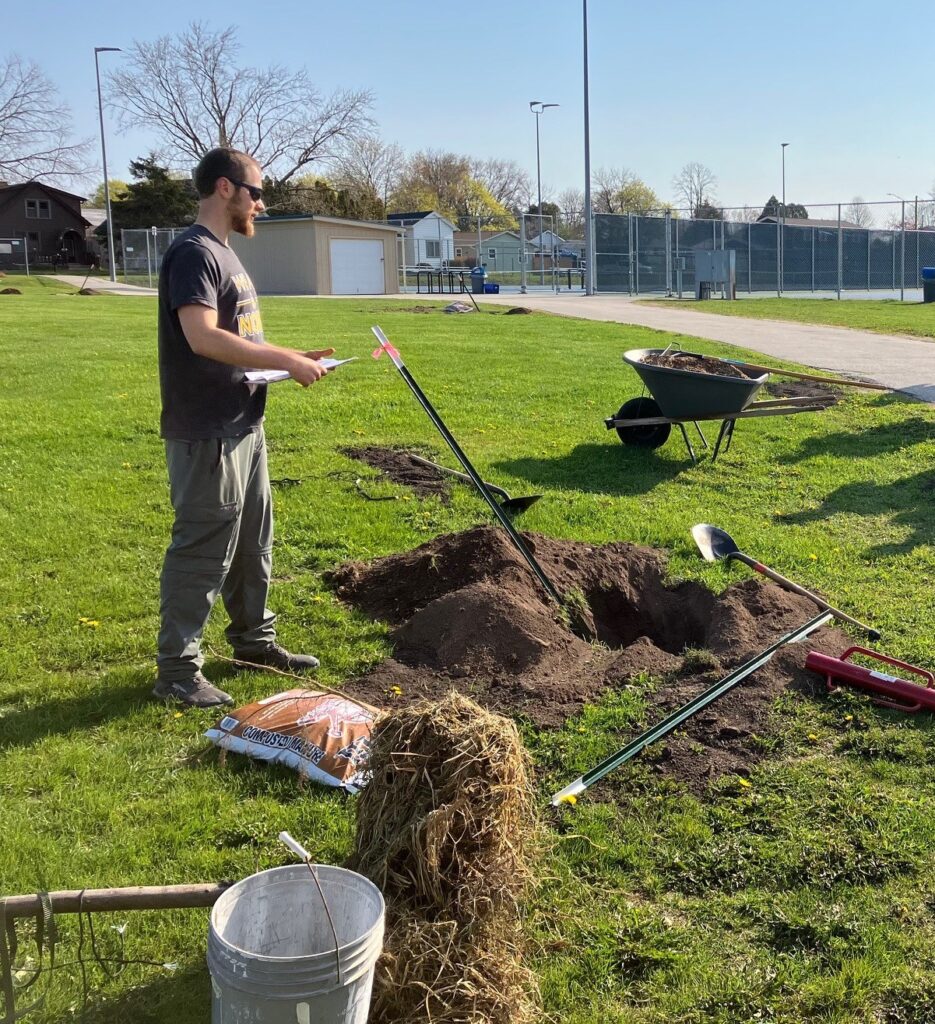
Photo Credit: Tony Fessler
A collaborative urban reforestation project involving the Sheboygan Area School District, the Sheboygan Rotary Club Restoration of our Trees Sheboygan (ROOTS) and the Lakeshore Natural Resource Partnership (LNRP) completed a second major milestone on May 10, 2025. This first-of-its-kind urban reforestation collaboration was initiated in 2024 through a matching $25,000 Wisconsin Department of Natural Resources (DNR) Urban Forestry Grant to ROOTS and LNRP. Continue reading “Collaborative Reforestation – Sheboygan Area School District”
Wild Cucumber Will Catch Your Attention
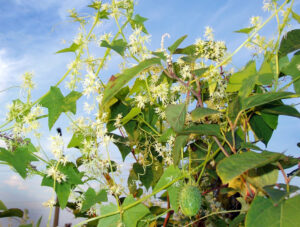
Star-shaped leaves, pale flowers and cucumber fruit, all characteristics of wild cucumber. / Photo Credit: Bugwood.org
By the Wisconsin Department of Natural Resources
Plants that are pokey, viny or quick to spread across the landscape sometimes seem alarming when you discover them in your backyard or woods, or even when you spot them along the highway.
Wild cucumber has all these characteristics, and its growth rate has been quite prolific in some parts of Wisconsin again this year. But all of this is not as ominous as it seems.
2026 Urban Forestry Grants Announced
By Nicolle R. Spafford, DNR Urban Forestry Grants Manager; Nicolle.Spafford@wisconsin.gov or 715-896-7099
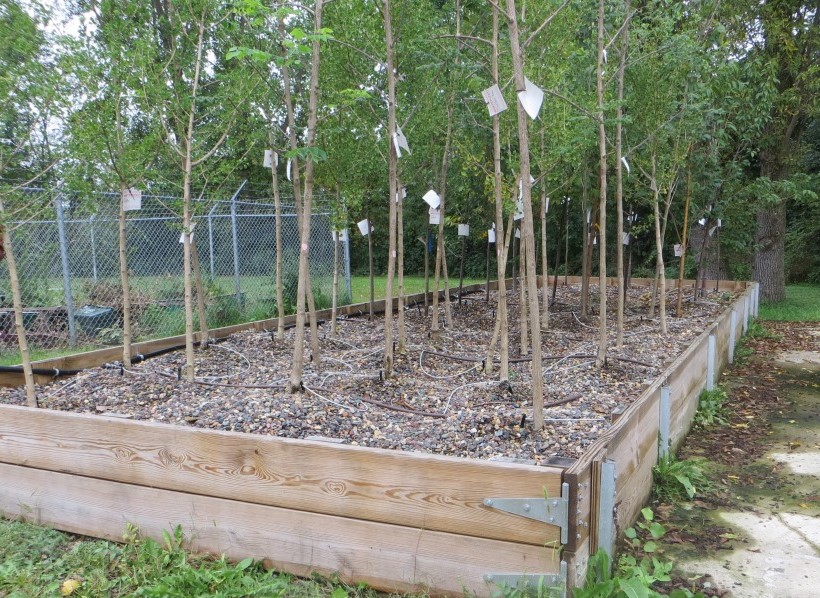 Beginning July 1, 2025, cities, villages, towns, counties, tribes and 501(c)(3) nonprofit organizations in –or conducting their projects in – Wisconsin can apply for a regular or startup 2026 Wisconsin Department of Natural Resources (DNR) Urban Forestry grant. The total 2026 available funding is $559,680, with a possible release of $139,920 of catastrophic storm reserve to fund a second round in March 2026. Continue reading “2026 Urban Forestry Grants Announced”
Beginning July 1, 2025, cities, villages, towns, counties, tribes and 501(c)(3) nonprofit organizations in –or conducting their projects in – Wisconsin can apply for a regular or startup 2026 Wisconsin Department of Natural Resources (DNR) Urban Forestry grant. The total 2026 available funding is $559,680, with a possible release of $139,920 of catastrophic storm reserve to fund a second round in March 2026. Continue reading “2026 Urban Forestry Grants Announced”
Please Submit Trees Planted This Spring!
By Dan Buckler, DNR Urban Forest Assessment Specialist; Daniel.Buckler@wisconsin.gov or 608-445-4578
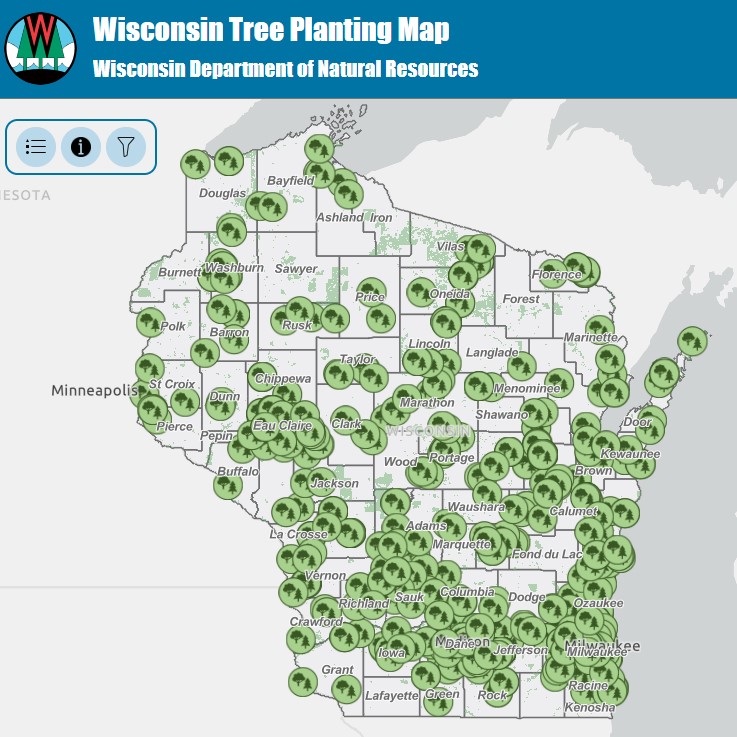 When your newly planted trees are getting comfortable in their new homes, you’ve pulled the splinters from your hands and you find yourself at a desk asking yourself, “What now?”, we have an answer for you.
When your newly planted trees are getting comfortable in their new homes, you’ve pulled the splinters from your hands and you find yourself at a desk asking yourself, “What now?”, we have an answer for you.
Please take a moment and record your trees in the Wisconsin Tree Planting Survey. Those submissions will then appear on the Tree Planting Map and be tallied toward the state’s pledge to the Trillion Trees Initiative. Governor Tony Evers signed the pledge to protect and restore Wisconsin’s rural and urban forests by planting 100 million trees in Wisconsin by 2030. Continue reading “Please Submit Trees Planted This Spring!”
DNR Staff Drafted To Plant Trees In Green Bay

Governor Tony Evers addresses the crowd prior to planting 15 large shade trees.
As part of the 2025 NFL Draft festivities in Green Bay during the week of April 21, the Wisconsin DNR Urban Forestry Team proudly served as a key technical partner for the tree planting event. Held in partnership with the NFL, Oneida Nation, Great Lakes St. Lawrence Governors & Premiers and Verizon as part of the NFL Green initiative, the event brought attention to the importance of community trees and environmental stewardship. Continue reading “DNR Staff Drafted To Plant Trees In Green Bay”
Take Action On Invasive Species This Month
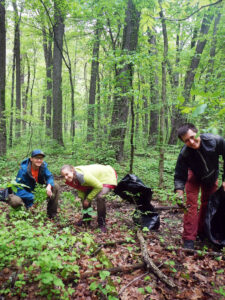
Volunteers smile while they spend a busy day pulling garlic mustard from a Wisconsin forested area. Volunteers provide thousands of hours of annual help in the fight against invasive plant species. / Photo Credit: Wisconsin DNR
By Mackenzie Manicki, Wisconsin DNR Invasive Plants Specialist
Mackenzie.Manicki@wisconsin.gov or 608-206-4561
June is Invasive Species Action Month in Wisconsin. This tradition of spreading awareness and taking action began back in 2005.
Twenty years ago, the Wisconsin Invasive Species Council collaborated with partners such as the Wisconsin Department of Natural Resources (DNR) and the Invasive Plants Association of Wisconsin (IPAW) to hold the first Invasive Species Action Awards, aimed at recognizing and celebrating professional or volunteer groups and individuals that exemplify what it means to make an impact on invasive species.
Continue reading “Take Action On Invasive Species This Month”
Arbor Day 2025: Growing Together Across Wisconsin
By Jay Dampier, DNR IRA Grant Coordinator
Jason.Dampier@wisconsin.gov or 920-765-1935

Arbor Day story time
This April and early May, communities across Wisconsin came together to celebrate Arbor Day. The DNR supported over 40 in-person events statewide. From Marshfield to Menasha and from New Richmond to New Glarus, staff fanned out across the state engaging communities in Arbor Day celebrations. Continue reading “Arbor Day 2025: Growing Together Across Wisconsin”
